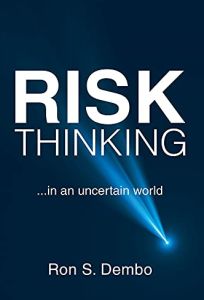Join getAbstract to access the summary!

Join getAbstract to access the summary!
Ron S. Dembo
Risk Thinking
...In an Uncertain World
Ron Dembo, 2021
What's inside?
Risk thinking involves running scenarios involving unknown unknowns to mitigate possible future negative effects.
Recommendation
Risk managers often use sophisticated models to understand the future through the lens of the past. However, such recent catastrophes as the 2008 financial crash and the Fukushima catastrophe show that such forecasting is inadequate. In today’s complex and intricately interconnected world, the observation of British novelist LP Hartley rings true, “The past is a foreign country; they do things differently there.” Fortunately, decision-makers have an alternative to modeling the future based on the past: Risk thinking opens planning to include unlikely, but potentially devastating, future possibilities. Anyone making decisions in an uncertain business environment will find this work helpful.
Summary
About the Author
Dr. Ron S. Dembo is the founder and CEO of riskthinking.AI, a company developing data and algorithms to help price climate risk into the financial markets. Formerly he was founder and CEO of Algorithmics Inc. which supplies enterprise risk systems to banks. He has been an associate professor at Yale, a visiting professor at MIT and a consultant to Goldman Sachs.



















Comment on this summary